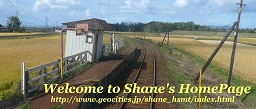|
Inokashira Park

|
Inokashira Park is located to the west from downtown Tokyo, near Kichijyoji Station. The park is surrounded by a residential area.
The area of Inokashira Park is 42.8 hectares. Large amount of spring water creates a pond in the middle of the park. The park has been the important water source even since the Jyomon Age
(14,000 years ago - 300 to 500 years B.C.)
.
In 1590, TOYOTOMI Hideyoshi
(1537 - 1598) ordered TOKUGAWA Ieyasu
(1543 - 1616) to move from Hamamatsu to Edo (present-day Tokyo). Before TOKUGAWA Ieyasu moved to Edo, Edo was a small village and only hundreds of houses were located.
TOKUGAWA Ieyasu rebuilt Edo Castle and his retainers also moved to Edo. In 1603, TOKUGAWA Ieyasu opened the Edo Bakufu, the central government in the Edo Age, the population of Tokyo rapidly increased. It is estimated that the population of Edo in 1630s were estimated as 200,000 or more.
Please refer the page of "the ruins of Edo Castle":
http://handejapan19.html.xdomain.jp/TravelDestinations/Kanto/EdoCastle_E.html
The pond in Inokashira Park was very important water source for the people in Edo during the Edo Age
(1603 - 1868)
.
During the Edo Age, the area of "Inokashira Park" was the Edo Bakufu's estate and was kept off. In the Meiji Age
(1868 - 1912), the area of "Inokashira Park" became the imperial estate. It was open for the public as Inokashira Park in 1917.
You will be able to go to "Inokashira Park" from Inokashira-Koen Station on the Inokashira Line, Keio Railway.
You will walk to "Inokashira Park" along the Kanda River.
|
|
The atmosphere of the Kanda River seems as if you are in forests in a mountain area.
You will see Inokashira Pond
The pond is located in forests and it has a slender shape to an east-west direction.
The pond is surrounded by forests. These forests were protected by Edo Bakufu during the Edo Age, and in the Meiji Age by the Empire of Japan.
|
|
At the west end of Inokashira Pond, Benzaiten Temple, "Saraswati", is located. Benzaiten Temple was founded in the middle of the tenth century by MINAMOTO-No Tsunemoto
(? - 961?).
MINAMOTO-No Yoritomo
(1147 - 1199), who was the first "Shogun" in the Kamakura Age
(1185 - 1333), built temple buildings.
These temple buildings were destroyed by fire at the Genko War
(1331 - 1333).
In 1636, TOKUGAWA Iemitsu
(1604 - 1651), the "Third Shogun" in the Edo Age, rebuilt the temple buildings.
Benzaiten Temple was well worshipped during the Edo Age. Five-part gravestones and Stone Buddha Statues were dedicated.
Two guardian dogs in front of the Benzaiten Hall are unique.
|
|
Inokashira Park has easy accesses from downtown Tokyo, Shibuya and Shinjyuku.
The wide and deep forests enable you to be relaxed and refreshed.
|
|
|
How to get there
From Shibuya in Tokyo, you will take a local train on the Inokashira Line to Inokashira-Koen. It will take approximately thirty minutes. You will also take a rapid train on the JR Chuo Line from Shinjyuku to Kichijyoji. It will take fifteen minutes. It will take another fifteen minutes on foot from Kichijyoji Station to Inokashira Park.
Other Historical Sites near by:
Sensoji Temple in Asakusa
Ruins of Edo Castle
Gotokuji Temple
Kuhonbutsu" Temple
Jindai Botanical Park
|
|

 Home Page in Japanese: "Shane's HomePage"
Home Page in Japanese: "Shane's HomePage"

 Home Page in Japanese: "Shane's HomePage"
Home Page in Japanese: "Shane's HomePage"